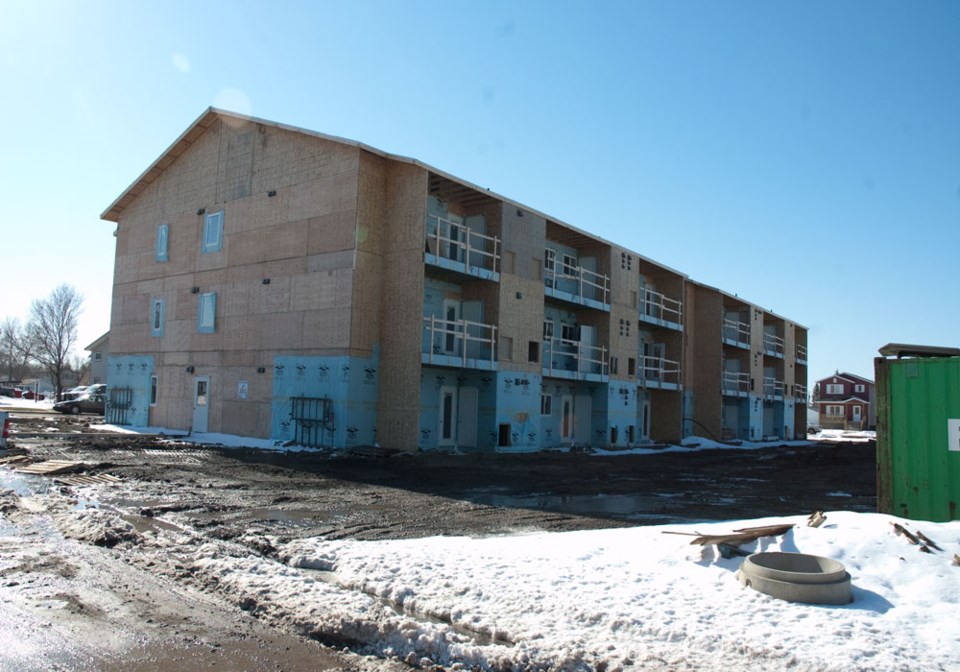Estevan may still be boasting the highest rental prices in the province, but in a Saskatchewan dealing with low oil prices, there is growing pressure for those prices to decline.
The Canadian Mortgage and Housing Corporation spring rental market review of Saskatchewan noted Estevan is continuing to experience high rental prices following years of low vacancy rates, but also that the vacancy rate has shot up. At 5.5 per cent a year ago, rental properties are now roughly 20 per cent vacant. Estevan’s vacancy rate was effectively zero per cent in 2013.
Goodson Mwale, senior market analyst for CMHC in Saskatoon, spoke with the Mercury last week and noted Estevan’s small “universe” of rental units, just 576, makes the rental market more susceptible to vacancy fluctuations.
“The size of the rental universe in Estevan is quite small,” noted Mwale. “When we get a little bit of change in terms of the availability and vacancy, and when you have such a small universe, it tends to amplify the change.”
Mwale noted these figures may not represent the current rental rates, following the drop in oil price and slowdown of economic activity in the Energy City, because the data are reflective of what the situation was in December 2014.
Since then, oil prices have remained low, and the outlook for activity in the oilfield, at least in the short term, has gotten murkier. He said when the CMHC releases its updated report in October, a more accurate picture of how low oil prices are impacting the Estevan rental market this spring will be available.
But the numbers show Estevan rents dropping in many categories, and in some cases rents are dropping below the provincial average. Though two-bedroom units still lead the province at an average rent of $1,302, bachelor suites saw a significant drop, from $749 in April 2014, to $612 this past April. The provincial average rent for a bachelor suite is $681. Bachelor units, however, only account for 24 units in the city.
One-bedroom apartment prices also fell year-over-year from $1,046 to $950. In that category, only Lloydminster is higher, with those renting for an average of $979. Combining the average of all rents, Estevan dropped from $1,170 in April 2014, to $1,155 this April, this is $10 more than second-highest Lloydminster.
Mwale said the CMHC likes to look at a rental market in terms of fixed samples, including only structures present in 2015 that were also present in 2014. He noted there was an addition of about 30 rental units in Estevan in 2015, and said it may not be relevant to use those new units when comparing price or how that contributes to the vacancy rate. If the units are newly built, those additions may skew the direct comparisons from one year to the next.
When looking at the fixed sample, Mwale noted the rental price across all unit types has declined 13.4 per cent.
“That gives you a sense of what has happened,” said Mwale.
Considering Estevan’s few rental unit universe, the addition of 30 units may be a big contributor to the increase in vacancy rates. Those units increased the local rental universe by more than five per cent.
“Historically, we know Estevan has had some shortage in accommodation, so the reason for that increase is that it’s a small universe, but it also has to do with demand,” said Mwale. “The demand has declined. There have been layoffs in oil and gas.”
Considering the timing of the drop in the price of oil last fall, and how long those economic factors begin to really shape the rental market, Mwale said the impacts of low oil will really become clear in the fall.
“What will be very interesting is when we do the fall report, to see what has changed since last October,” he said. That report will draw from data as recent as this June.
“I’m curious to see how that’s going to play out come October, to see what has changed.”



